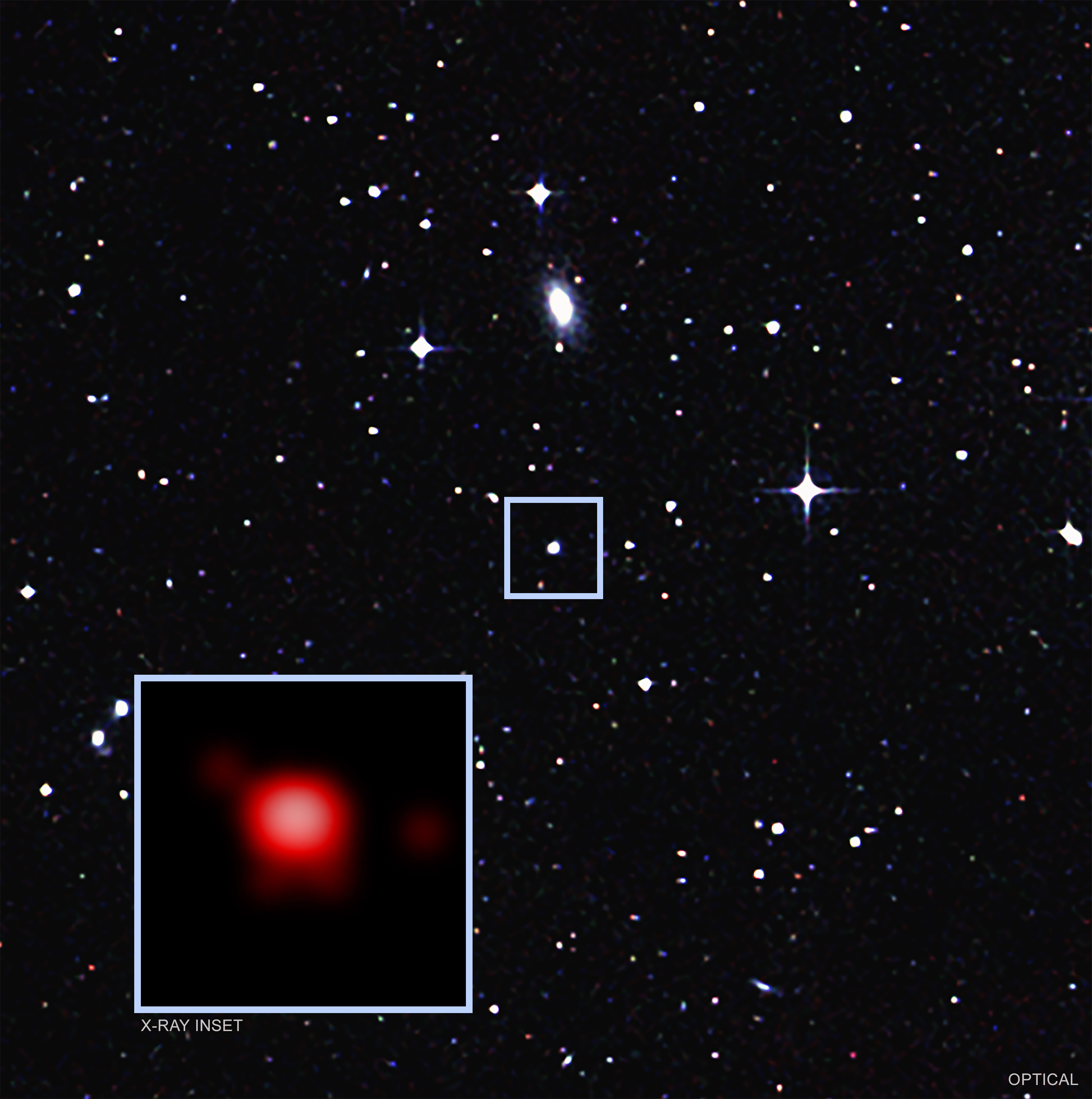
We all know we should be getting three square meals a day. And now astronomers have found a black hole which seems to share this preference — it consumes material on a regular schedule of once every nine hours.
Using data from NASA’s Chandra X-ray Observatory and the European Space Agency (ESA)’s XMM-Newton observatory, the researchers found the black hole in a galaxy called GSN 069 and saw it emit bursts of X-rays which repeat in a regular pattern. The bursts of X-rays indicate the black hole is consuming dust and gas from nearby stars, but it is very unusual to see this happening on such a regular schedule. Around three times a day, the black hole is eating through an amount of material equivalent to four of our moon.
“This black hole is on a meal plan like we’ve never seen before,” Giovanni Miniutti from ESA’s Center for Astrobiology in Spain, lead author of the paper, said in a statement. “This behavior is so unprecedented that we had to coin a new expression to describe it: ‘X-ray Quasi-Periodic Eruptions’.”
In the periods of consumption, the amount of X-rays given out by the black hole increase by 20 times, and the temperature of the gas falling into the black hole also rises from around 1 million degrees Fahrenheit to around 2.5 million degrees Fahrenheit. These outbursts are what allowed the astronomers to observe the regular feeding of the black hole.
“By combining data from these two X-ray observatories, we have tracked these periodic outbursts for at least 54 days,” co-author Richard Saxton of the European Space Astronomy Centre said in the same statement. “This gives us a unique opportunity to witness the flow of matter into a supermassive black hole repeatedly speeding up and slowing down.”
The researchers aren’t yet sure what exactly is causing the pattern. It could be that energy builds up in the disk of matter around the black hole until it reaches a point of instability and falls into the black hole. This pattern of build up and consumption could explain the regular schedule. Or it could be that there is another body orbiting the black hole, such as a remnant of a star, which interacts with the disk of matter and how it is consumed by the black hole.
The findings are published in the journal Nature.



